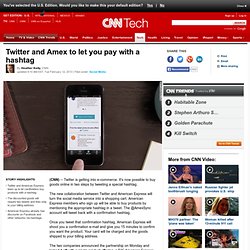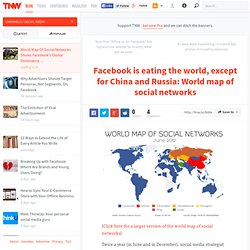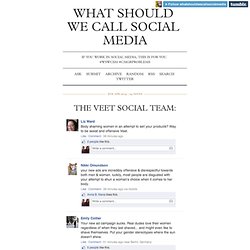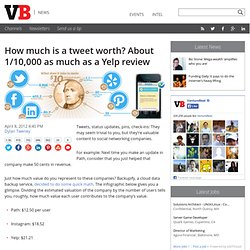

The Collaborative Economy: How It’s Changing the Way People Consume Brands. And how brands can tap into this culture of sharing.

Every breakup starts with a letter. In this recent and rather poignant letter directed at brands, Jeremiah Owyang, a partner at Altimeter group, encapsulated perfectly the disruptive force of change that the collaborative economy would have on brands and traditional businesses. How Microsoft uses Facebook, Twitter, Pinterest and Google+ Marketers Use Social Media Data to Drive Campaigns. Marketers worldwide are continuing to invest in making sense of the surge of data produced by digital interactions with customers—68% said they will increase data-related marketing spending in 2013 and just 3% planned to decrease spending, according to a study by Infogroup Targeting Solutions and Yesmail Interactive.

So, what are marketers’ best sources of customer data? As of October 2012, 49% said website analytics, 19% said data from email campaigns and 12% said data arising from social media interaction. Other data sources included SMS/phone analytics, direct mail interaction and display analytics. Publications Study: For Stores, Social Media Still A Bust 02/08/2013. Twitter and Amex to let you pay with a hashtag. Twitter and American Express team up to let cardholders buy products with a hashtagThe discounted goods will require two tweets and then ship to your billing addressAmerican Express already has discounts on Facebook and other networks via hashtags (CNN) -- Twitter is getting into e-commerce.

It's now possible to buy goods online in two steps by tweeting a special hashtag. The new collaboration between Twitter and American Express will turn the social media service into a shopping cart. American Express members who sign up will be able to buy products by mentioning the appropriate hashtag in a tweet. The @AmexSync account will tweet back with a confirmation hashtag. World Map Of Social Networks Shows Facebook's Global Dominance. (Click here for a larger version of the world map of social networks) Twice a year (in June and in December), social media strategist Vincenzo Cosenza updates his ‘world map of social networks’, in which he shows what the most popular social network is in now 137 countries worldwide – at least according to a combination of Alexa and Google Trends for Websites traffic data.

The edition for June 2012 was published by Cosenza earlier this afternoon, and it shows just how dominant Facebook has become in almost all of the world. Funny caveat: Google+ stats are not displayed by Google Trends for Websites. According to the traffic data examined by Cosenza, Facebook is numero uno in 126 out of the 137 countries that were analyzed. Europe is the largest continent on Facebook with 232 million users, while North America has 222 million and the whole of Asia boasts 219 million users (source: Facebook Ads Platform). What Should We Call Social Media. OK, I am apparently very late to the party, but this was a revelation and I can’t just not share.

I apologize in advance if I’m posting something old. So you know this really stupid thing that happens with links? It’s actually the worst thing in the world. WELL, to fix the problem, all you have to do is copy & paste the link here. How much is a tweet worth? About 1/10,000 as much as a Yelp review. Tweets, status updates, pins, check-ins: They may seem trivial to you, but they’re valuable content to social networking companies.

For example: Next time you make an update in Path, consider that you just helped that company make 50 cents in revenue. Just how much value do you represent to these companies? Backupify, a cloud data backup service, decided to do some quick math. The infographic below gives you a glimpse. Dividing the estimated valuation of the company by the number of users tells you, roughly, how much value each user contributes to the company’s value. Path: $12.50 per userInstagram: $18.52Yelp: $21.21Pinterest: $28.09Foursquare: $40.00Twitter: $71.43Dropbox: $80.00LinkedIn: $104.46Facebook: $118.34. 3 Reasons Curation is Here to Stay. Perhaps you won't believe me since it's my job to spread the gospel of curation as the Chief Evangelist of Pearltrees, but I think curation is here to stay.

The Three C's of Information Commerce: Consumption, Curation, Creation Brian Solis. InShare180 Over the years, social networks have lured us from the confines of our existing realities into a new genre of digital domains that not only captivated us, but fostered the creation of new realities. As George Bernard Shaw observed, “Life is not about finding yourself, life is about creating yourself.” Such is true for social networks and the digital persona and resulting experiences we create and cultivate. It was the beginning of the shift in behavior toward an era of digital extroversion, self-defined by varying degrees of sharing, connections, and engagement. On Facebook, Twitter, MySpace, et al., we were attracted by the promise of reigniting forgotten relationships and enamored by the sparking of new connections.